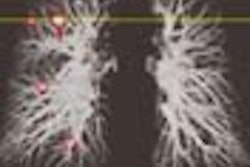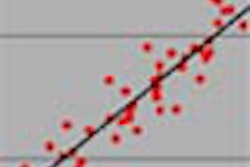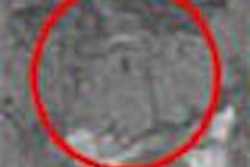A picture is worth a thousand clinical diagnoses in the world of stroke neurology, but there is some disagreement about the best type of picture -- perfusion CT or MRI? This disagreement was played out in back-to-back oral presentations last week at the American Stroke Association’s International Stroke Conference in Phoenix.
Dr. Marc Reichhardt, a neurology fellow at the University Institute of Social and Preventive Medicine, Lausanne University Hospital, Switzerland, said in an interview that perfusion CT has two powerful advantages: It is fast and it is accessible.
"Perfusion CT takes 10 minutes, while MR can take 30-45 minutes, and worldwide there is much more availability of CT than MR," Reichhardt said.
He backed up the pro-CT case with data from a small single-center study of pre-fusion CT. The study was designed to test the prognostic accuracy and feasibility of ischemic penumbra measurement by perfusion CT within 3 hours of acute stroke onset, and before intravenous tPA (tissue plasminogen activator) thrombolytic therapy.
"Perfusion CT accurately assessed penumbra and infarct in 89% of patients," he said. Moreover, perfusion CT accurately assessed vessel patency and predicted final infarct size. The perfusion CT studies were performed within a mean of 114 minutes of stroke onset, he said. "So it was possible to complete the study well within the 3-hour window."
Reichhardt also claimed that perfusion CT is safer because the patient can be more easily monitored. "I have had two cases in which patients hemorrhaged while in the MR machine and no one knew this because the MR technician was not trained to detect the bleeding," he said.
Dr. Chelsea Kidwell, co-director of the UCLA Stroke Center, argued in favor of multimodel MRI with diffusion-weighted imaging. Kidwell, who also is an assistant professor at the University of California, Los Angeles, presented preliminary results from the Hemorrhage Early MRI Evaluation (HEME) study.
HEME evaluated patients with both MRI and CT, but MRI imaging was done before CT. The mean time to MRI was 2.7 hours; the mean time to CT was 3.5 hours. For each patient the MRI and CT interpretation was performed by one of two neurologists blinded to the clinical data. In all, 169 patients were evaluated. Acute ischemic stroke was identified on MRI in 110 patients and on CT in 22 patients.
Acute hemorrhage was visualized on CT in 23 patients, and "all but one of these was correctly identified by MRI. One of the hemorrhages was initially labeled as meningioma."
Kidwell concluded that MRI is as accurate as or better than CT.
Commenting on these presentations was Dr. Steven Warach, Ph.D., from the National Institute of Neurological Diseases and Stroke in Philadelphia.
"Perfusion CT is an alternative for MRI, but in my opinion it is not quite as accurate," Warach said. One drawback of CT is that "you have to hope the stroke is in the region that is imaged. You have to just choose a 2-cm block of tissue and hope that you have chosen correctly."
MRI, on the other hand, can image the entire brain, which is a considerable advantage, Warach added.
While Reichhardt agreed that the perfusion CT images only a limited region, he said that with close consultation between the "stroke neurologist making the clinical assessment and the neuroradiologist," this limitation is not a problem. He said that careful clinical workup "effectively targets the correct brain region."
The availability of CT is a big advantage, Warach conceded. "But that is access to noncontrast CT. It does not mean that perfusion CT is widely available. This is an evolving technology that currently has limited availability."
Reichhardt concurred that perfusion CT is not yet widely available, but predicted that within a year or two the technology would be commonplace at most stroke centers.
Although Warach said he "personally prefers MRI because I think it gives more information," he added that he welcomes the use of both technologies, since "good imaging is essential to both diagnosis and timely management of stroke."
By Peggy PeckAuntMinnie.com contributing writer
February 19, 2003
Related Reading
CT aids in tPA triage for stroke patients, February 17, 2003
Brain abnormalities on MRI seen after coronary bypass surgery, December 31, 2002
Diffusion-weighted MRI better than CT in stroke diagnosis, September 23, 2002
CT zeros in on brain-tissue damage in heat-stroke patients, August 14, 2002
Copyright © 2003 AuntMinnie.com



















